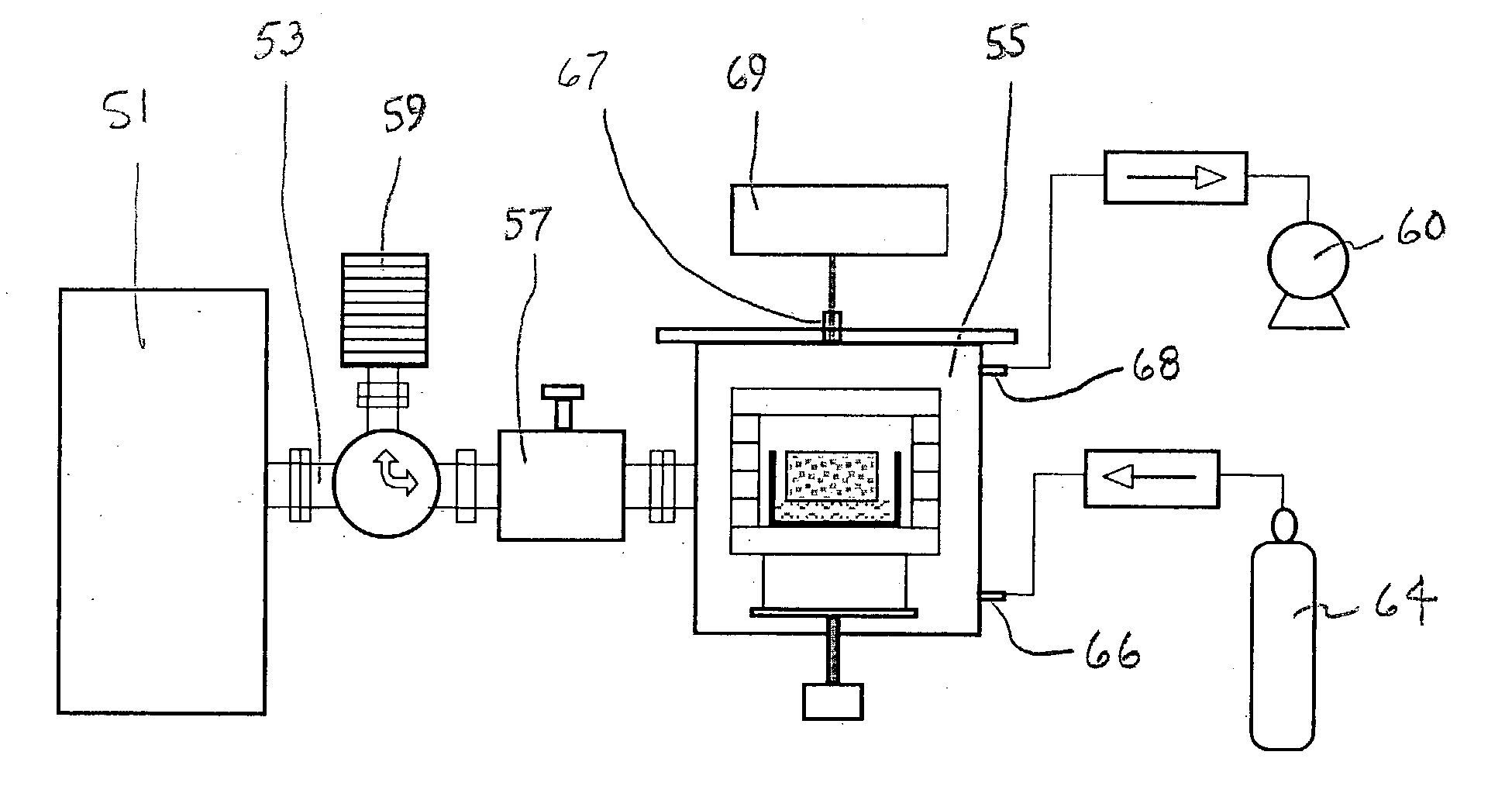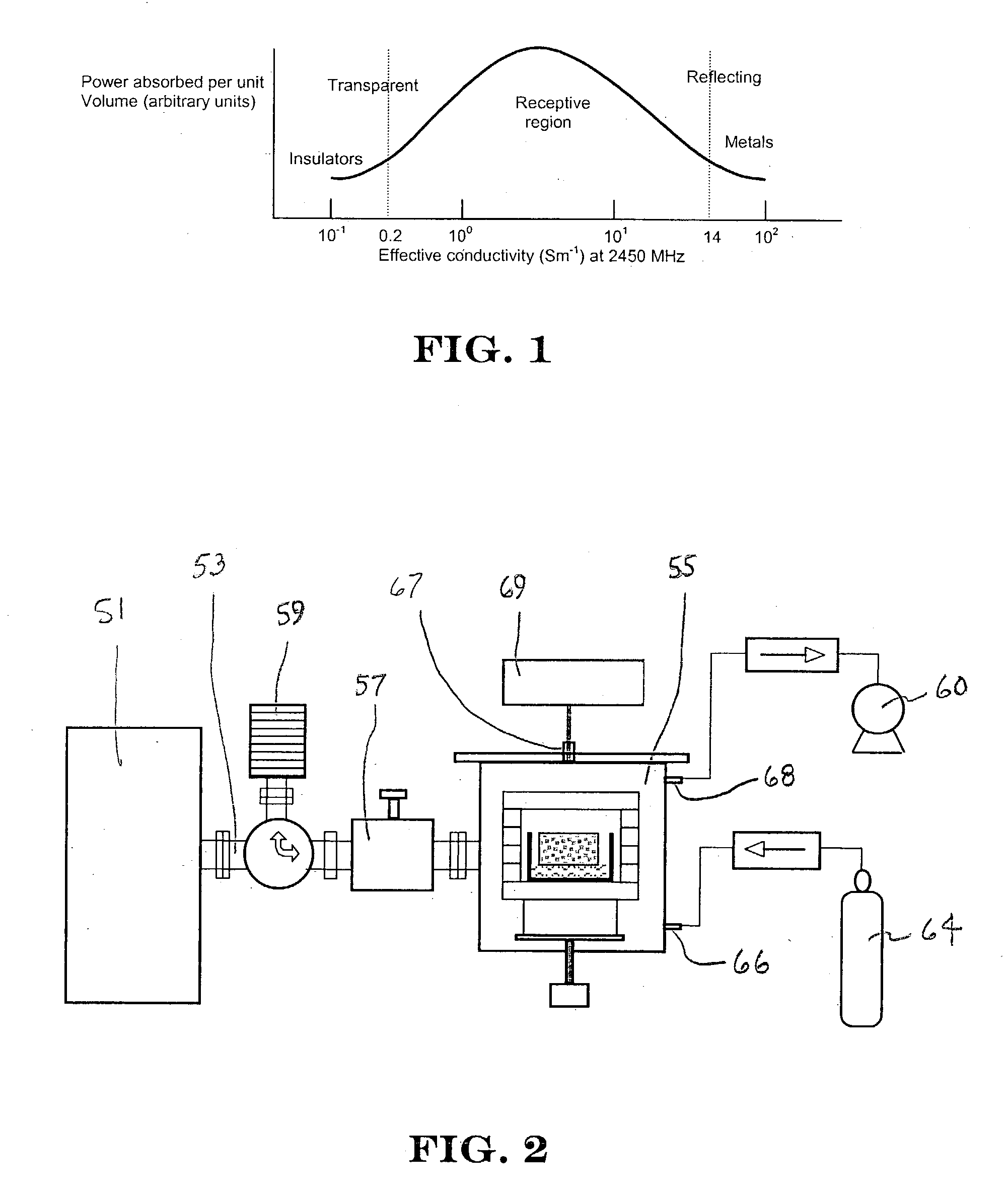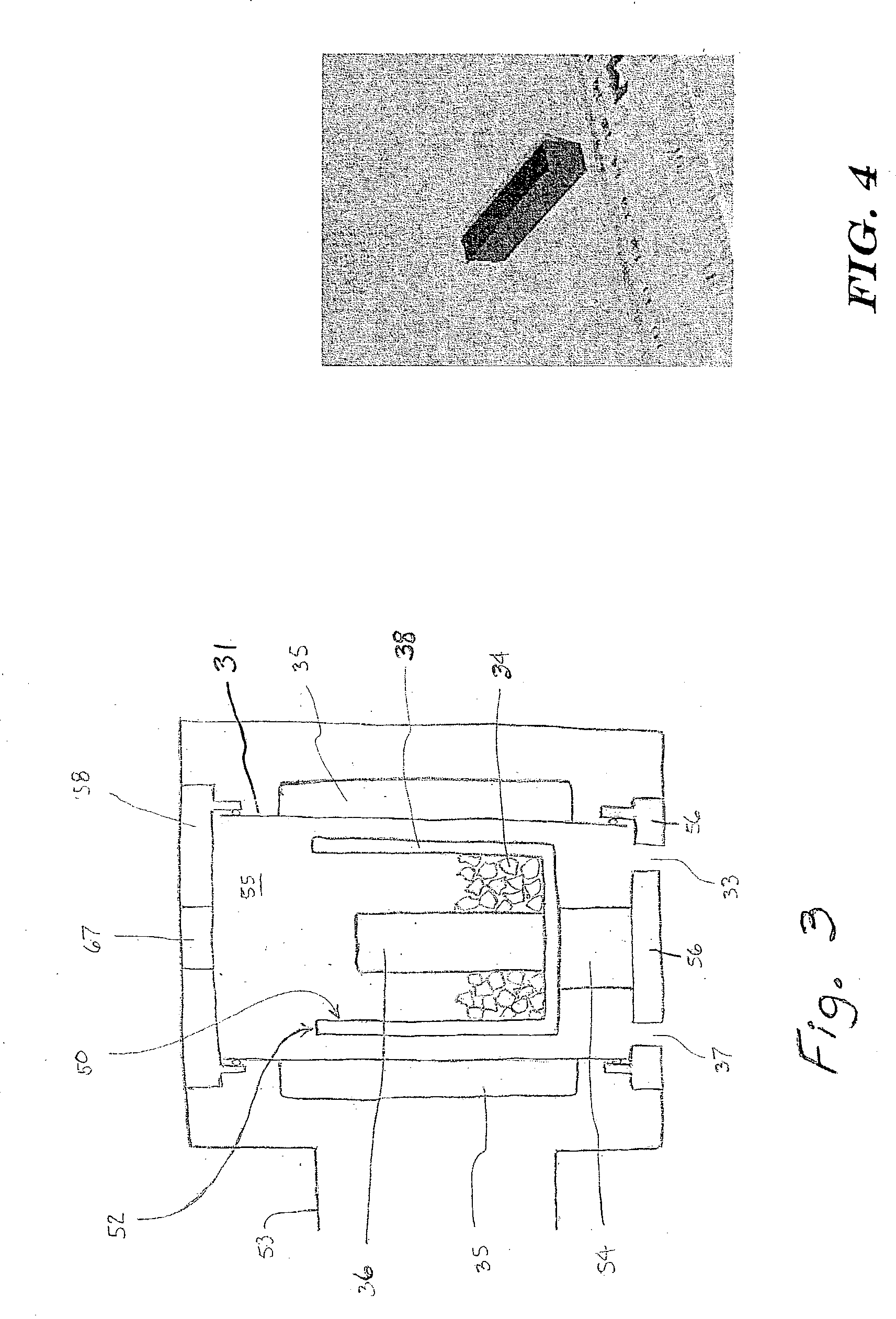Microwave processing of composite bodies made by an infiltration route
a composite body and infiltration technology, applied in the direction of non-metal conductors, conductors, manufacturing tools, etc., can solve the problems of limited frequency bands in this range for research and industrial heating applications, large differences in product characteristics, and slow process speed, so as to speed up the total cycle time
- Summary
- Abstract
- Description
- Claims
- Application Information
AI Technical Summary
Benefits of technology
Problems solved by technology
Method used
Image
Examples
example
[0067] This example demonstrates the production of an Si / SiC.sub.p composite made by a reaction-bonding process using microwave heating.
[0068] First, a preform beam measuring about 0.64 cm square by about 5.7 cm long was prepared by a sedimentation casting technique. Specifically, SiC particles (a mixture of 240 and 500 grit) were mixed with about 20 parts de-ionized water and about 8 parts of crystalline fructose (Krystar 300, A. E. Staley Mfg. Co., Decatur, Ill.) to make a slip. The slip was poured into a rubber mold. The rubber mold was placed on a vibrating table for about 3 hours. The supernatant liquid was removed and the mold was placed in a freezer for about 3 hours. Nekt, the preform was demolded and bisque fired in an inert atmosphere furnace to a maximum temperature of about 650.degree. C., thereby carbonizing the fructose. The bisque fired perform was about 70 percent by volume loaded in SiC.
[0069] To assemble the components for reactive infiltration, this preform 36 was...
PUM
| Property | Measurement | Unit |
|---|---|---|
| Fraction | aaaaa | aaaaa |
| Pressure | aaaaa | aaaaa |
| Percent by volume | aaaaa | aaaaa |
Abstract
Description
Claims
Application Information
 Login to View More
Login to View More - R&D
- Intellectual Property
- Life Sciences
- Materials
- Tech Scout
- Unparalleled Data Quality
- Higher Quality Content
- 60% Fewer Hallucinations
Browse by: Latest US Patents, China's latest patents, Technical Efficacy Thesaurus, Application Domain, Technology Topic, Popular Technical Reports.
© 2025 PatSnap. All rights reserved.Legal|Privacy policy|Modern Slavery Act Transparency Statement|Sitemap|About US| Contact US: help@patsnap.com



